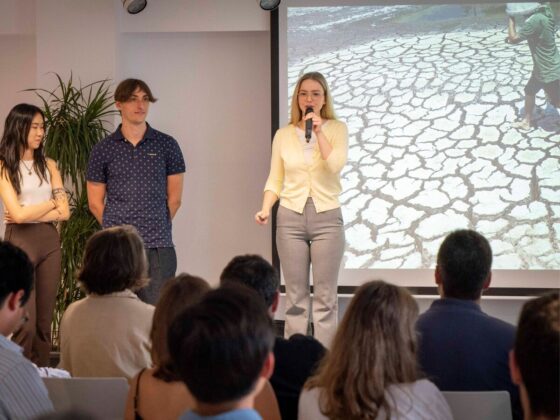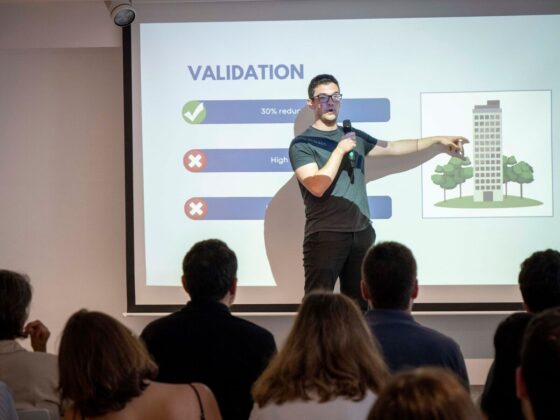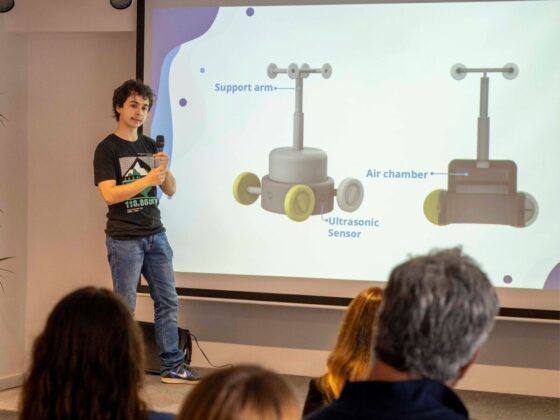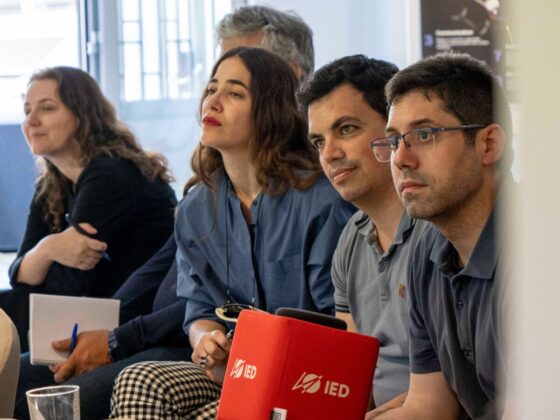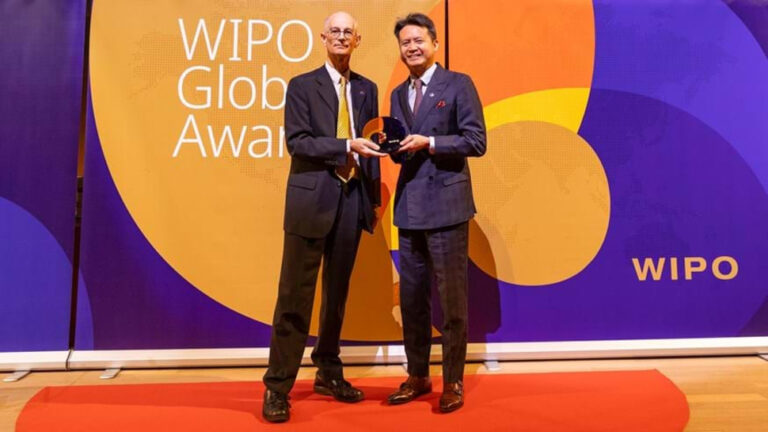The Challenge-Based Innovation for Artificial Intelligence (CBI4AI), a program under ATTRACT Academy, merges advanced AI technologies with ATTRACT innovations to address societal challenges and human needs. It is aimed at Business, Design and Engineering students who work in multidisciplinary teams around a specific United Nations Sustainable Development Goal (SDG), incorporating cutting-edge technologies following a user-centred design process and matching them to find solutions to the main social problems of our time.
The CBI4AI is coordinated by Esade Business School, in collaboration with IED Barcelona and UPC, and its objective is to deliver a unique learning experience to the students, propose innovative applications for technologies developed within the ATTRACT ecosystem, as well as develop solutions to pressing challenges for humanity at large using AI.
In the current edition of the program, students collaborated with researchers from some of the R&D&I projects from ATTRACT phase 2: h-cube, IALL and ULTRARAM™.
Get to know all the teams and their prototypes:
- Team The Pipers: “Nanoplumbr” is a fully autonomous robot that can be deployed inside any pipe to seal water leakages temporarily. It is especially relevant in situations where proper fixing is delayed and can help save big amounts of water. It facilitates a quick response to new leaks thanks to a very simplified deployment process, and it can operate without the need to cut the water supply to the affected area. The team used the ULTRARAM™ technology.
- Team Pharmers: with an approach that addresses water pollution and generates economic value, this project manages agricultural wastewater by detecting and extracting phosphorus, which is then returned to farmers as fertilizer, creating a circular system. Furthermore, data is monitored and stored throughout the process to predict and analyse phosphorus pollution. The team used the h-cube and ULTRARAM™ technology.
- Team The Plumbers: the “Water Nano Grid” project addresses water waste by promoting its reuse and raising consumer awareness about the water crisis. It introduces a novel approach aimed at transforming household water use in older residential buildings through a smart water recirculation system. This system optimizes water consumption and provides real-time feedback via a user-friendly app that features educational content about water. The team used the h-cube, IALL and ULTRARAM™ technology.
- Team Wild Chickens: the “H2BOT” is an advanced underwater robot that uses artificial intelligence to address the pollution in Lake Geneva. This bot is engineered to autonomously collect, classify, and elevate the underwater waste to the surface, facilitating its removal and significantly reducing water contamination. The robot’s architecture includes systems for navigation, image processing, material handling, and geolocation, among others. The team used the IALL and ULTRARAM™ technology.
- Team AcquaWatch: saltwater intrusion in coastal aquifers, driven by the over-extraction of groundwater, poses a critical threat to freshwater resources. This project integrates IoT sensors, blockchain technology, and Digital Twin modelling to address this issue. IoT sensors collect real-time data on salinity, flow rates, and water consumption, which is securely stored on a blockchain to ensure data integrity and transparency. The Digital Twin simulates various scenarios to optimize water management strategies. Additionally, smart contracts facilitate water trading, promoting sustainable usage. The team used the h-cube, IALL and ULTRARAM™ technology.
- Team Aqua Intelligence: the project aims to revolutionize wastewater management in Lebanon, where only 8% of wastewater is treated due to cost and energy issues. The team proposes a two-step solution that includes: 1) Installing sensors in wastewater pipes to measure bacterial levels with the data sent to a ULTRARAM-powered data centre for analysis to identify high energy-production potential areas. 2) It recommends these areas to municipalities for the installation of anaerobic digestion plants that convert wastewater sludge into biogas. This biogas then fuels combined heat and power (CHP) plants, making the treatment process self-sustaining. The team used the h-cube and ULTRARAM™ technology.
Discover more about the CBI4AI program here.


